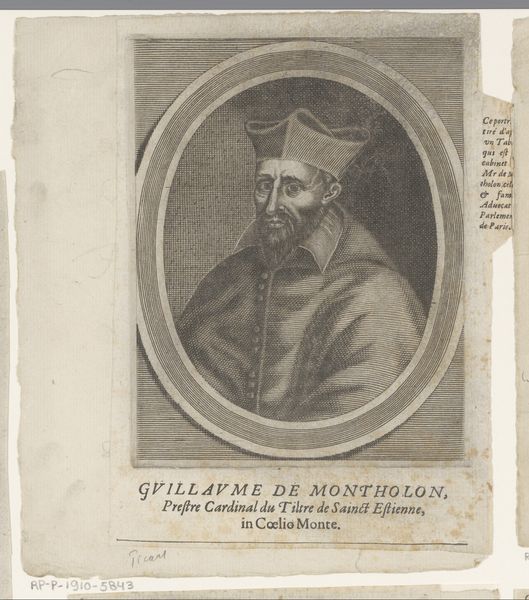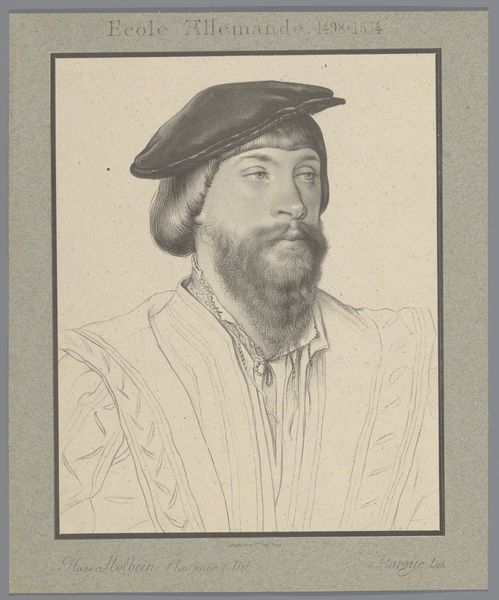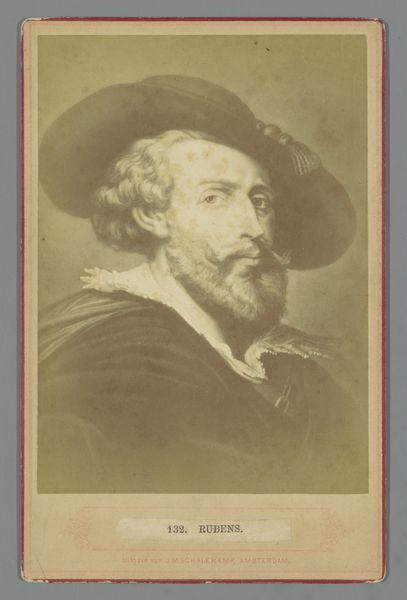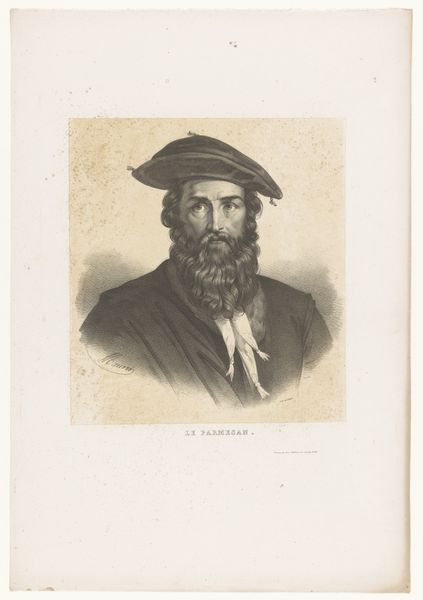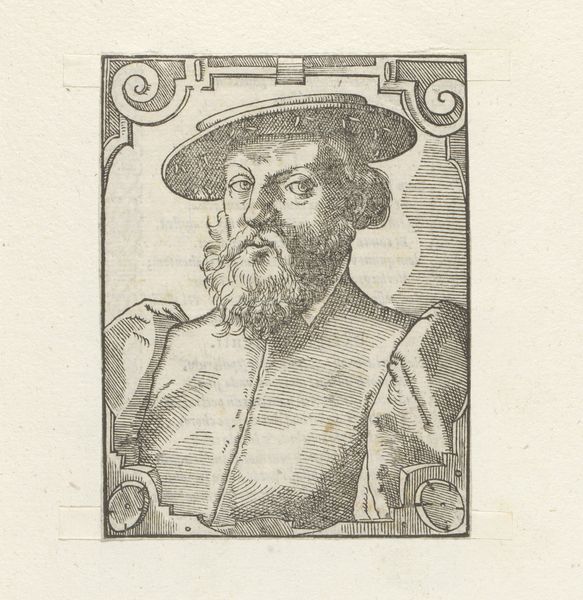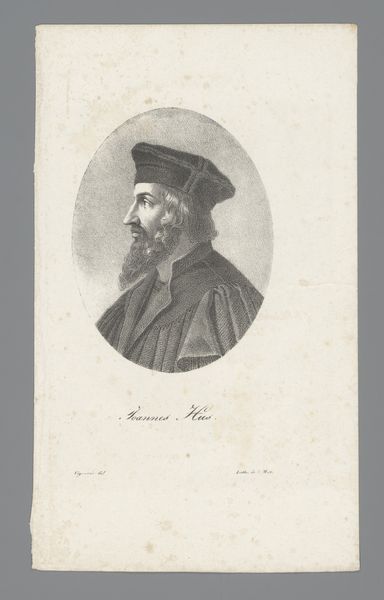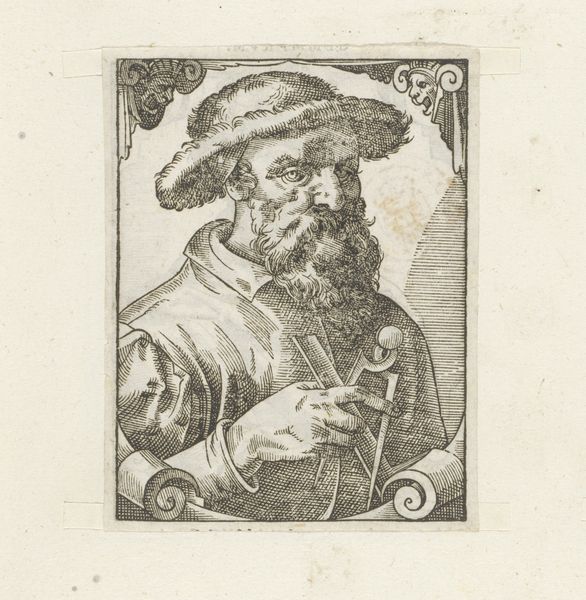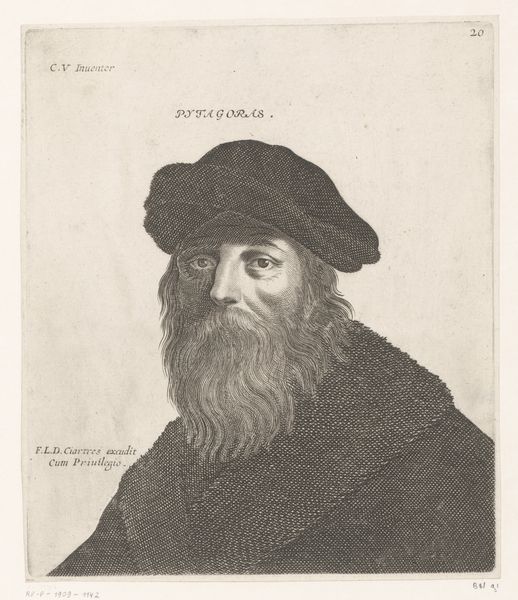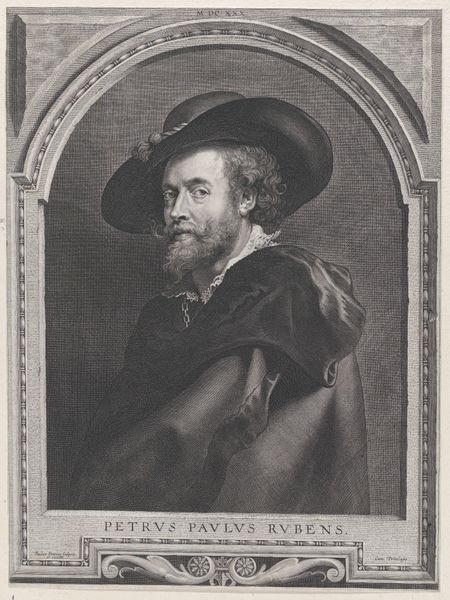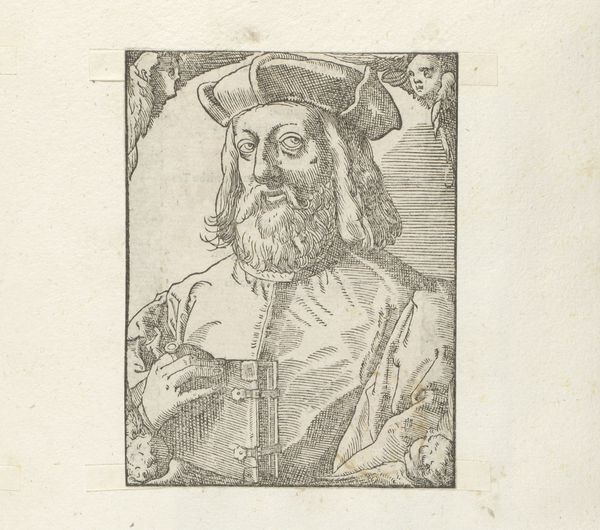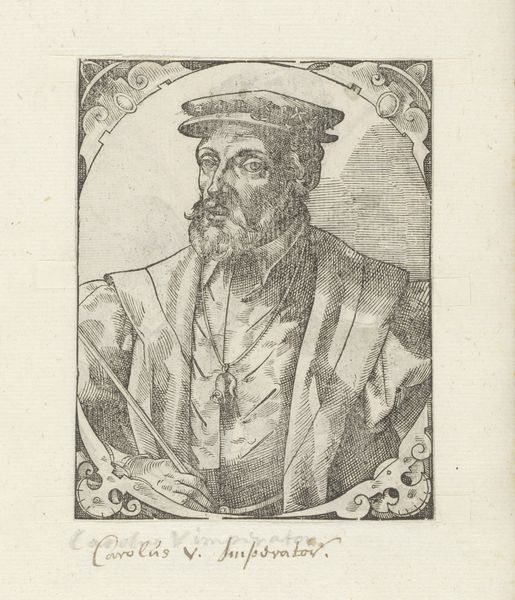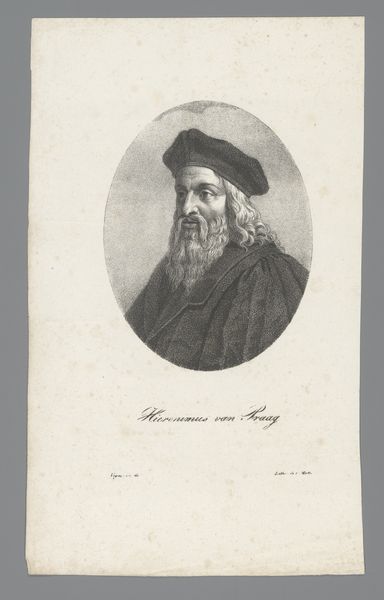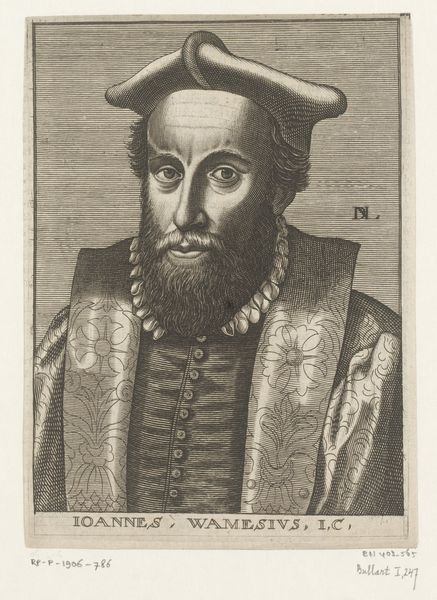
drawing, coloured-pencil, paper
#
portrait
#
drawing
#
coloured-pencil
#
paper
#
coloured pencil
#
watercolour illustration
Dimensions: height 170 mm, width 130 mm
Copyright: Rijks Museum: Open Domain
Curator: Carlo Lasinio created this portrait, “Portret van Parmigianino,” around 1789, employing coloured pencil on paper. Editor: I find the use of blended, subdued tones really calming. There’s an undeniable softness to the figure despite the formal pose. Curator: Yes, observe how the drawing, despite the colouration, is almost monochromatic, pushing one’s attention to form. Considering the work in the late 18th century, and the engraver-like inscription, “IL PARMIGIANINO," at the bottom, can we suppose it was purposed for broad distribution? A democratic function perhaps? Editor: It does read almost as an idealised likeness, almost manufactured through gentle shading, as opposed to a direct visual record. One is led to look through the image instead of at it. But tell me, what’s with the flattened hat? I’m wondering if its rigid geometry hints at artistic ambitions of the sitter. Curator: His artistic status becomes less apparent in light of the stylistic choices during that period. The portrait, while depicting Parmigianino, adheres to the conventions and aesthetics of 18th-century portraiture, influencing the construction of historical and artistic identities, as it aims for public consumption and likely participates in the Romanticization of the Renaissance. Editor: Indeed! This portrayal, regardless of its faithfulness, undoubtedly establishes him within a lineage, simultaneously perpetuating and participating in its mythology. Even the gentle colour pencil gives the portrait a timeless quality, suggesting some of its own mythicality. Curator: Thinking about how Lasinio's work acts within the grand narrative of art history allows a look at the broader social functions portraits fulfill and how perceptions and cultural values shape it. Editor: I agree. Close examination uncovers intriguing qualities. Curator: Well, I find reflecting on the piece as a component of larger dialogues incredibly fruitful.
Comments
No comments
Be the first to comment and join the conversation on the ultimate creative platform.
